 Image: Adam Patrick Murray / IDG
Image: Adam Patrick Murray / IDGIn a gaming PC, the graphics card is easily the most exciting component. Responsible for producing all those beautiful frames and pushing those frame rates as high as possible, you’d be lost without it.
But shopping for a graphics card can be madness. You have to navigate between Nvidia, AMD, and Intel, then sift through each one’s product offerings. You’ll struggle to discern between models like the Nvidia GeForce RTX 4070 and the RTX 4070 Ti. And even after you’ve decided on a model, that model might have numerous variations — like a reference version and a factory overclocked version.
Related: Common mistakes when buying a graphics card
Honestly, it can be overwhelming. Should you pay up for those special GPU versions? What do you actually get for what you pay? Is it worth the stress or can you just ignore all of the noise?
Well, if you ask me, I’m going to say: don’t fret over any of it. You shouldn’t be paying extra for factory overclocked GPUs. To understand why, though, we have to first understand why all of these different GPU versions exist in the first place. Let me take you through it.
What’s a reference GPU?
For any given graphics card, you have to start with a baseline foundation. In industry talk, this baseline version is called the reference. (Nvidia’s reference cards are dubbed Founders Edition, but it’s the same thing.)
The three primary GPU manufacturers — Nvidia, AMD, Intel — release their own reference cards, and these reference cards are released with standard designs and hardware specifications. All of this establishes a baseline for any particular graphics card, and the manufacturer sets the MSRP for each card released (often as low as they can go).
These reference cards are distinct from third-party graphics cards, which we’ll get into in the next section below. For now, just know that the reference version of any graphics card tends to be the cheapest of all its variations (e.g., Nvidia GeForce RTX 4070 Super Founders Edition has an MSRP of $599 while third-party variations are usually more expensive).
Side note: This wasn’t always the case. Years ago, Nvidia’s Founders Edition cards used to be priced higher than third-party versions, which made it easier for those third-party partners to sell their GPUs at cheaper prices. In recent years, though, Nvidia has been selling their Founders Editions at base MSRP and putting pressure on partners to provide more value with their versions.
Though reference graphics cards operate at base-level specifications, they often come in fancy packaging with premium build quality. They’re usually sold directly by the manufacturers or through exclusive retail partnerships. (In the US, Nvidia sells FEs through Best Buy and you likely won’t find them on sites like Amazon or Newegg. AMD and Intel reference cards can be found more widely, but still in limited quantities.)
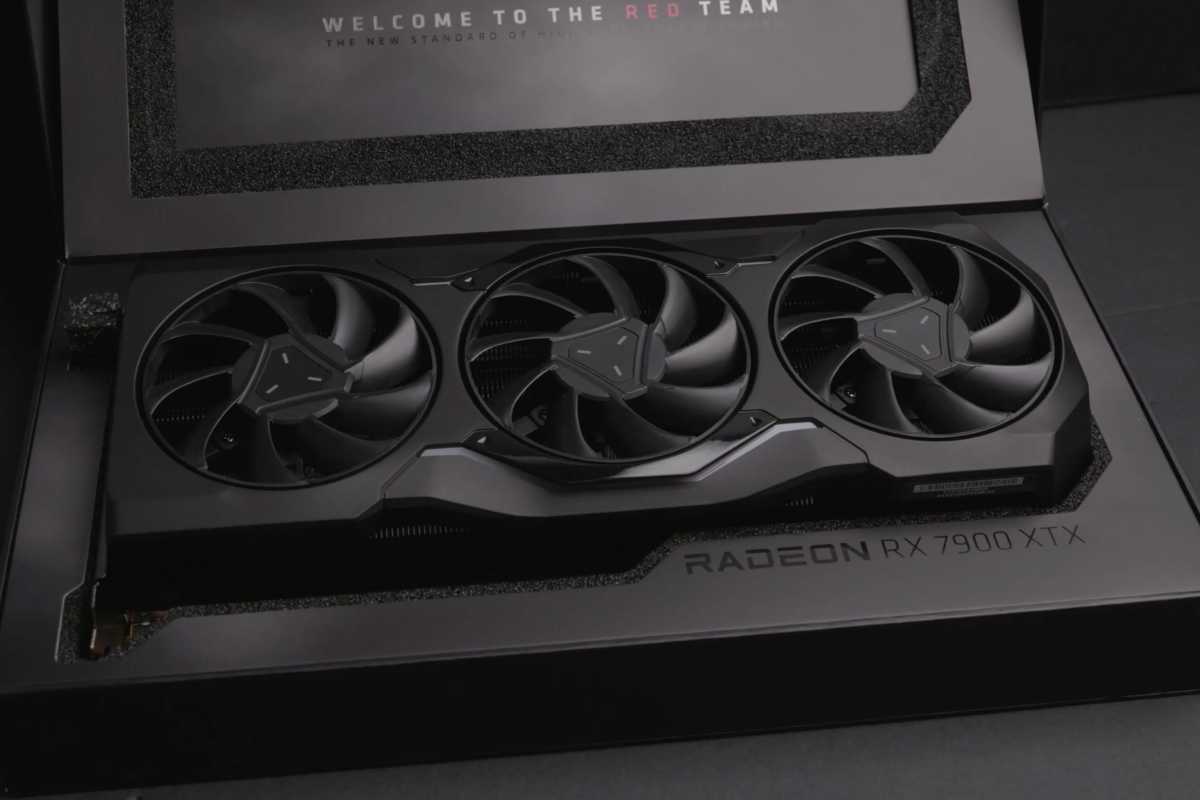
Thiago Trevisan / IDG
Thiago Trevisan / IDG
Thiago Trevisan / IDG
Since manufacturers control the production pipelines of their GPUs, they tend to have the best PCBs and hardware components — and they can afford to sell them for cheaper than third-party partners can.
That’s why reference GPUs have become quite desirable in recent years, not just for their designs but for their performance. (Historically, Founders Edition GPUs were noisy and inefficient, but lately they’ve been good enough to kill the need for other versions. Same goes for AMD.)
What’s an AIB partner GPU?
The term AIB has been causing confusion in the graphics card community for several years now because people keep using it to mean difference things. Here’s a quick explanation:
An add-in board (AIB) is any card that can be inserted into your PC’s expansion slots to extend capabilities. According to this definition, all graphics cards are technically AIBs, and there are many other non-graphics card accessories that are also AIBs.GPU manufacturers (i.e., Nvidia, AMD, Intel) work with third-party manufacturers (e.g., Gigabyte, MSI, PowerColor) who create their own riffs on reference graphics cards. These third-party manufacturers are typically called AIB partners or board partners.Within the graphics card community, an AIB card is typically synonymous with custom card or non-reference card — in other words, a graphics card version created by an AIB partner.
AIB partners purchase GPU chips from Nvidia, AMD, or Intel, then design their own graphics cards with those chips while making sure they adhere to the original manufacturers’ specifications.

Thiago Trevisan / IDG
Thiago Trevisan / IDG
Thiago Trevisan / IDG
The graphics card business has historically had low margins, which helps to explain why there are so many spruced-up versions — the goal is to upsell to consumers and earn more profit per card sold.
When you shop for a graphics card, you’re most likely looking at AIB partner versions. AIB partners want to sell their graphics cards far and wide so they’re available at many retailers, and they’re also the ones providing the warranties and RMA support for their products.
Most AIB partners offer simpler versions of the GPU on hand and sell for base MSRP. These hit the minimum specifications required by the GPU manufacturer and tend to have comparable performance, but they aren’t as aesthetically pleasing as their more-expensive counterparts.

Thiago Trevisan / IDG
Thiago Trevisan / IDG
Thiago Trevisan / IDG
AIB partners also create more expensive versions of the same GPU. For example, the Nvidia GeForce RTX 4090 has an MSRP of $1,599 set by Nvidia, but ASUS sells its ROG Strix GeForce RTX 4090 variant for $1,999 and has cheaper TUF variants that can go as low as the $1,599 MSRP.
What are factory overclocked GPUs?
The premium build quality and strong performance of reference graphics cards have put AIB partners in a tight squeeze. With thin profit margins at baseline MSRP, they need to upsell their variants — and to do that, they need to figure out ways to entice buyers to shell out more cash.
One way is through factory overclocked GPUs.
A factory overclocked GPU is a graphics card that’s sold at a higher clock speed compared to its reference card. It’s pre-overclocked, if you will, and it’s been tested by the AIB partner for stability and performance. It frees you from the need to overclock the GPU yourself, and the card may also come with some modifications to support the higher clock speed.
Why factory overclocked GPUs generally aren’t worth paying extra
In my mind, there are two big reasons why factory overclocking isn’t worth whatever premium the AIB partner wants to charge.
First, factory overclocked GPUs have negligible performance gains.
If you were to go out and buy a factory overclocked GeForce RTX 4090 for $1,999, the reality is that you’d likely only see a single-digit performance difference compared to the $1,599 reference card or the AIB partner’s non-factory overclocked variants.
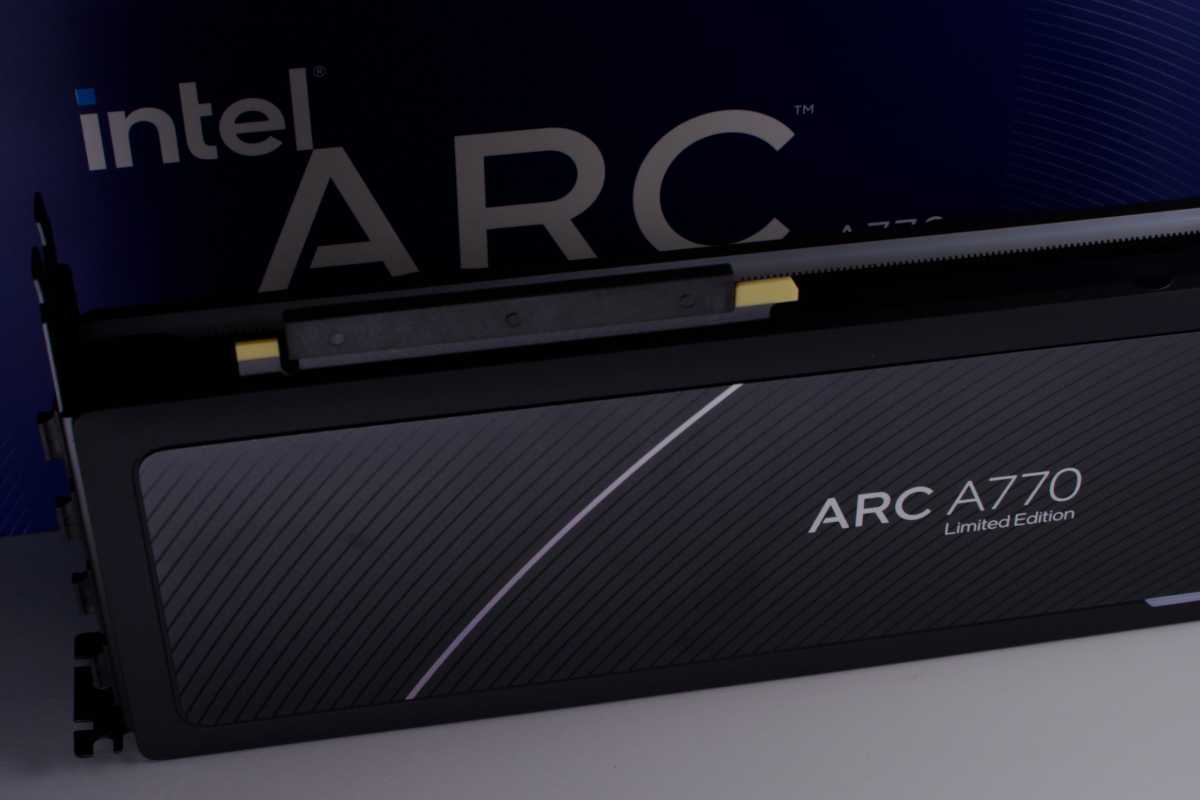
Thiago Trevisan / IDG
Thiago Trevisan / IDG
Thiago Trevisan / IDG
In other words, the markup for factory overclocking doesn’t actually get you that much more performance, and non-factory overclocked AIB partner GPUs perform just as well in many cases — definitely capable of meeting baseline specifications, at the very least.
Related: Reference vs. custom graphics cards, compared
Take the AMD Radeon RX 7900 XTX ($999) reference model, for example. It has a dual 8-pin PCI Express power connector and a TDP of 355 watts, with a game frequency of 2,300MHz and boost frequency up to 2,500MHz. Compare that to PowerColor’s Red Devil AMD Radeon RX 7900 XTX ($1,899), which ups the power connector to a triple 8-pin PCI Express design and bumps the game frequency to 2,395MHz and boost frequency to 2,565MHz.
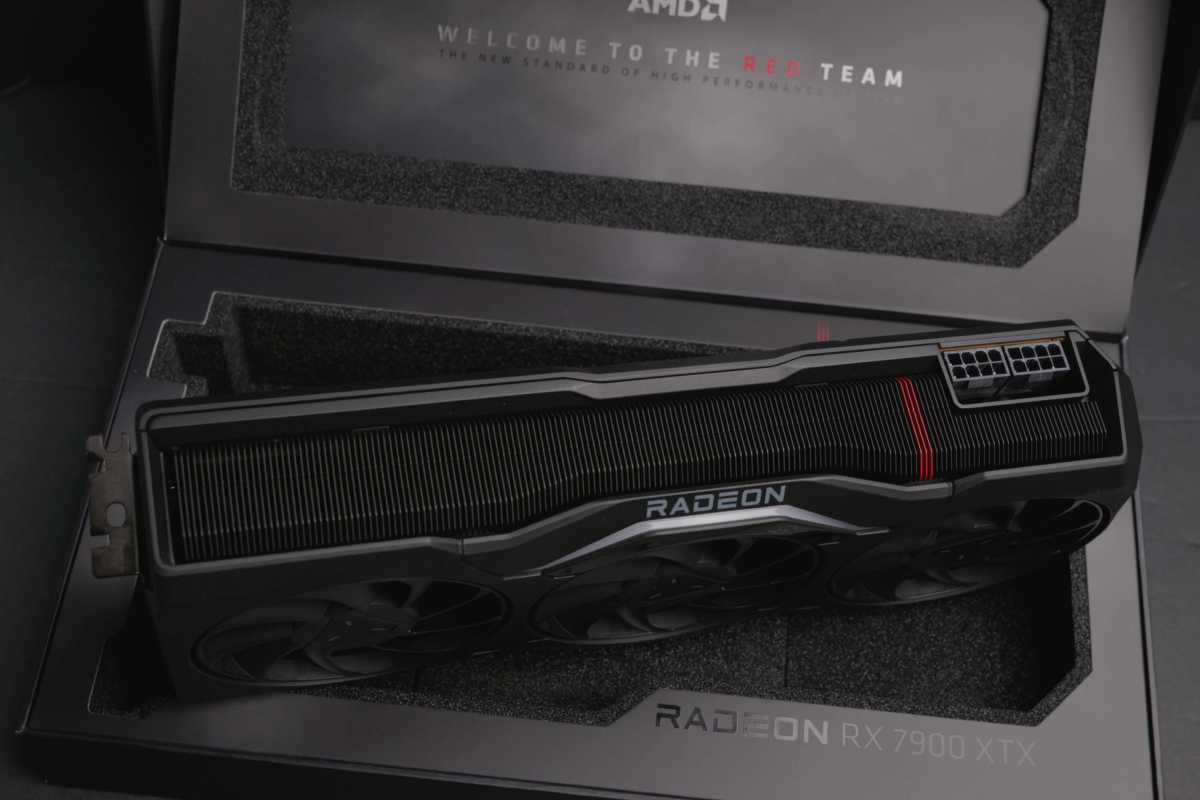
Thiago Trevisan / IDG
Thiago Trevisan / IDG
Thiago Trevisan / IDG
It’s basically the same GPU but with minor changes to eke out a tiny bit of extra performance, and it might give you several more frames per second in most games — barely noticeable to the naked eye.
Side note: Nvidia and other manufacturers often release mid-cycle GPU upgrades, too. These are entirely new product lines that typically replace the previous SKUs. For example, the GeForce RTX 4080 Super is a slightly improved version of the RTX 4080. The kicker here is its lower cost: $999 versus the $1,199 of its predecessor. AIB partners usually do the same thing to these by offering factory overclocked variants with slight performance tweaks at higher costs.
Second, factory overclocked GPUs often have oversized coolers.
While the performance gains on factory overclocked GPUs may be small, they still come at a cost: increased heat and noise. In increasing the power limits of a GPU, AIB partners may choose to compensate with better cooling — perhaps via beefier coolers.
The problem is, many of the larger and more complex coolers you see on factory overclocked GPUs are downright overkill and unnecessary for heat management. (In fact, with proper airflow in your PC case, base MSRP GPUs shouldn’t thermally throttle even when overclocked.)
Related: How to check your GPU’s temperature
You end up with an enormous graphics card that likely doesn’t fit in your average PC case. Many owners of large GPUs like the GeForce RTX 4090 have had to upgrade their PC cases because they just couldn’t close their glass side panels. Sort of a headache, isn’t it?

Thiago Trevisan / IDG
Thiago Trevisan / IDG
Thiago Trevisan / IDG
On the other hand, Founders Edition or reference GPUs are often the smallest in their class. They provide nearly the same performance while fitting snugly in small PC cases, with quiet cooling that’s capable enough to handle modern games. (Of course, some reference cards are still hefty. The GeForce RTX 4090 Founders Edition is smaller on average than an AIB partner variant, but it’s still quite large.)
GPU size is becoming a key factor for many PC builders, and it’s important enough that Nvidia has decided to act upon it — by introducing the GeForce SFF guideline for GPUs that fit in smaller PC cases.
When is a factory overclocked GPU worth buying, then?
Performance is only one angle when it comes to factory overclocked GPUs. You can’t forget about aesthetics.
Some gamers are attracted to the small cosmetic details that differentiate one GPU variant from another. Others are all about brand loyalty, willing to stick with one brand despite price. And yet others care more about matching system components than anything else.
I mean, if you have an ASUS ROG-branded gaming setup, you’re probably willing to pay a premium for an ASUS ROG factory overclocked GPU. That’s perfectly fine and can be as valid a reason as greater performance. Pay for what you value.
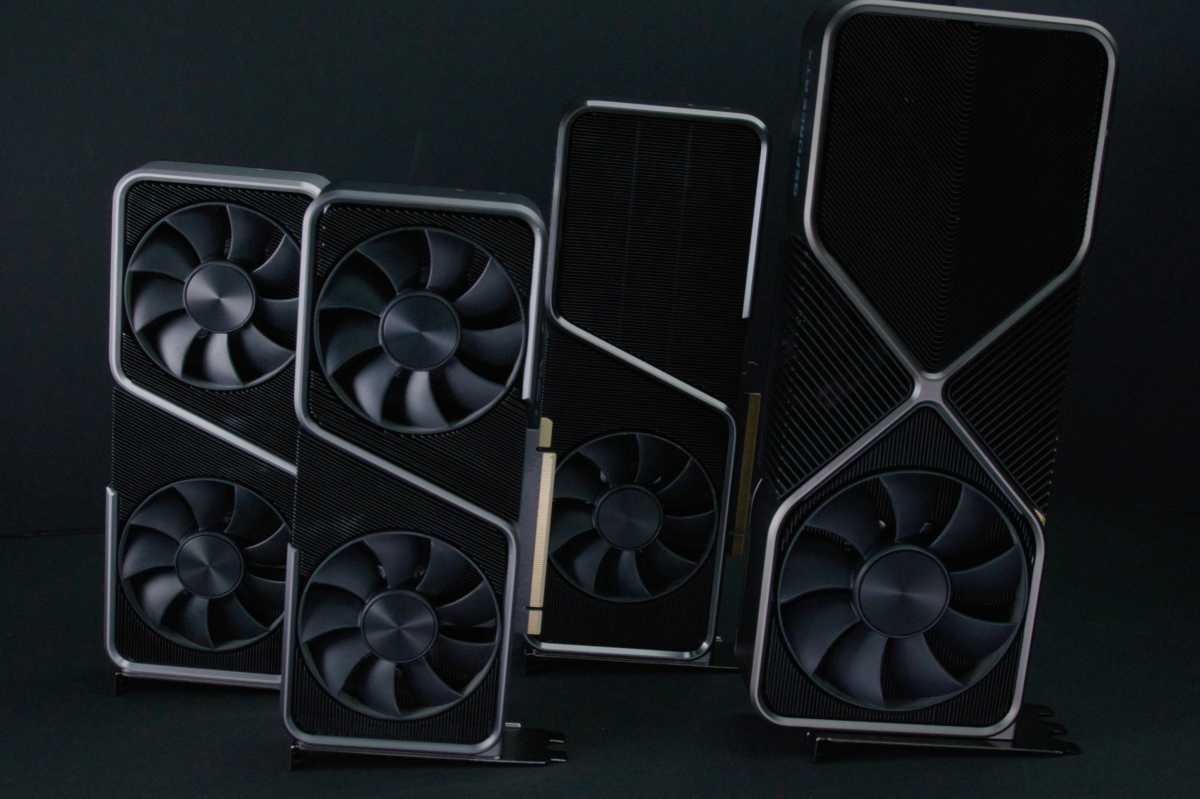
Thiago Trevisan / IDG
Thiago Trevisan / IDG
Thiago Trevisan / IDG
You might find the straightforward designs of reference and Founders Edition GPUs to be off-putting. Maybe they don’t feel “gamery” enough for you, in which case it might make sense to pay up for another variant that has the wow factor you’re looking for — and many factory overclocked GPUs rely on said wow factor to attract buyers.
These more-expensive GPUs tend to have fancier fan designs and the all-important RGB lighting setups that ooze that gamer vibe. Said GPUs can also punch themselves up with other non-essential features for enthusiasts, like dual BIOS and higher power limits.
Hardcore overclockers tend to prefer these pricier models because they offer more room to tweak performance and achieve higher benchmarks. For example, GPUs like the older EVGA GeForce RTX 3090 Kingpin provide enthusiasts with more than just factory overclocking — but for most gamers and users, these features aren’t needed and can often lead to issues for less-experienced tinkerers.
Related: How to benchmark your graphics card
Sometimes you may not have a choice
Given the intricacies of the GPU market, factory overclocked GPUs may actually be your only option at times.
Even though the GPU shortages are behind us, you’ll probably see fewer baseline MSRP GPUs from AIB partners on store shelves going forward. (Remember, AIB partners want to upsell you on factory overlocked GPUs to score higher margins.) What happens when reference and Founders Edition GPUs sell out fast and remain unavailable for months? You may have no choice but to buy those more expensive AIB partner cards.
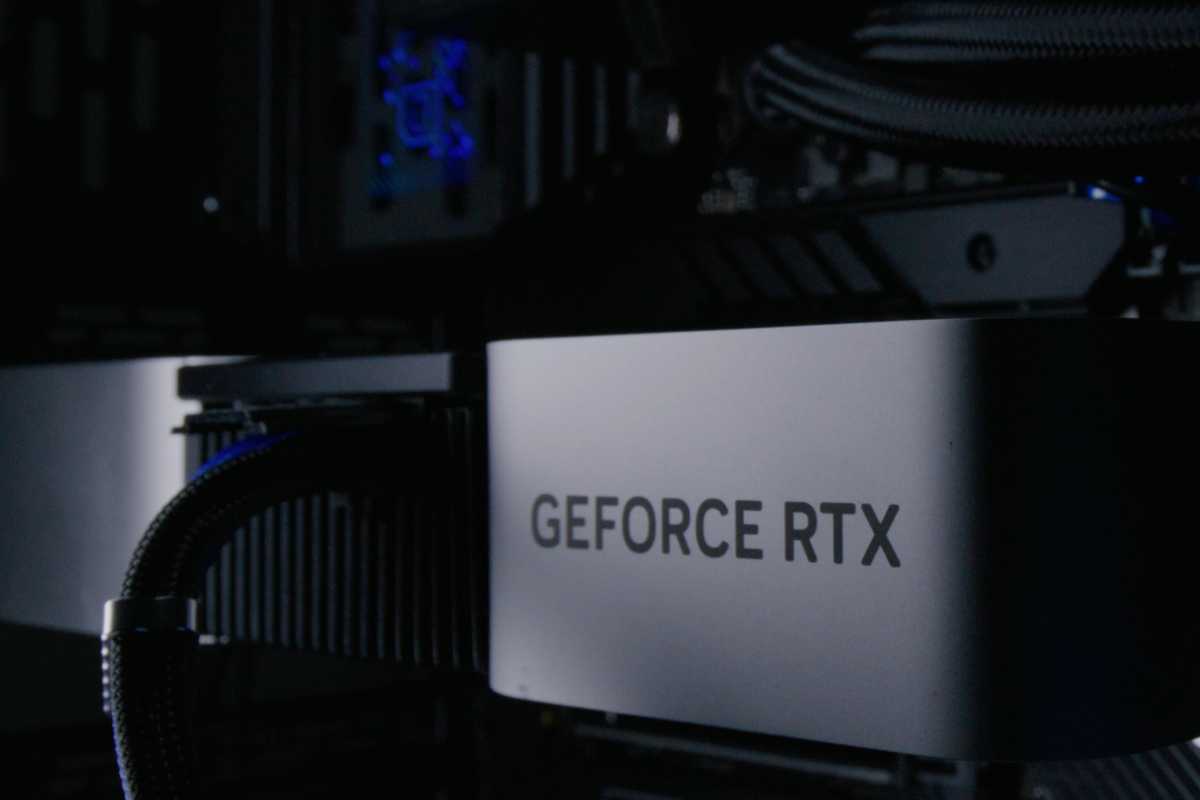
Thiago Trevisan / IDG
Thiago Trevisan / IDG
Thiago Trevisan / IDG
On the other hand, you sometimes run into factory overclocked GPUs that are basically the same price as reference editions, in which case the choice is a no-brainer. For example, we reviewed the AMD Sapphire Pulse Radeon RX 7900 XT and found it to have superior acoustics and better ports than the reference edition, and it cost nearly the same.
Sure, the more expensive version has a dual BIOS and RGB lighting, but that won’t matter for most users who would rather save on cost with similar performance.
And then you have limited edition GPUs or special themed products that only come in factory overclocked variants. If you want that limited edition product, you have no alternative. (But if you end up buying such a thing, you’re probably enough of an enthusiast to want the extra goodies.)
Don’t pay extra for factory overclocked GPUs unless you have a good reason
There’s only a tiny performance difference between reference GPUs and factory overclocked GPUs, so smart money will typically go with the reference edition. Often, you aren’t sacrificing anything — many modern reference graphics cards have incredible bang for your buck.
But availability can be an issue. If all the reference cards are out of stock, you may not have a choice but to shell out for a factory overclocked GPU. Or you may want the factory overclocked GPU for reasons other than performance, which are all totally valid.
Only you can decide whether a given GPU is worth the price — and in the case of factory overclocked GPUs, it may make sense to pay up if you know what you’re getting and know what the premium is for.
But if you only care about performance? It’s generally best to avoid paying extra for factory overclocked GPUs.
Further reading: The best graphics cards for every budget
Author: Thiago Trevisan, Contributor
Thiago Trevisan is a Mac and PC enthusiast for over 20 years, and has written for PCWorld and Macworld since 2021. He runs the YouTube channel Classical Technology with over 50,000 subscribers, which covers NVIDIA and AMD graphics cards, along with Macs such as the 2019 Mac Pro, and also writes about technology for HotHardware. Thiago has a degree in Classical Piano performance from the Hartt School of Music at the University of Hartford.
Recent stories by Thiago Trevisan:
DLSS 3 explained: How Nvidia’s AI-infused RTX tech turbocharges PC gamingNvidia GeForce RTX 4060 Ti vs. RTX 3060 Ti and Radeon RX 6700 XT: Fight!How to benchmark your graphics card